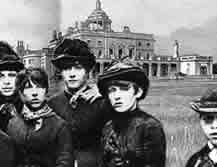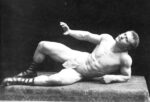Description
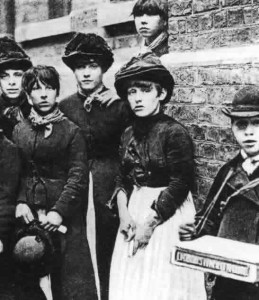 Meet the striking London match girls of 1888, whose labour produced the vast profits which had subsidised the purchase in 1887 by Wilberforce Bryant, CEO of Bryant & May, of one of the most expensive Palladian properties in England, complete with a celebrated collection of ‘Grecian’ statues.
Meet the striking London match girls of 1888, whose labour produced the vast profits which had subsidised the purchase in 1887 by Wilberforce Bryant, CEO of Bryant & May, of one of the most expensive Palladian properties in England, complete with a celebrated collection of ‘Grecian’ statues.
The fifteen hundred match girls— many Irish and in their teens—were protesting against the terrible pay and factory conditions, fourteen-hour days, a punitive fine system, and working with phosphorus, which led to bone cancer. The strike, sparked by the dismissal of one worker in early July, was supported by middle-class activists including Annie Besant. It was successful, forcing Bryant into important concessions.
Public opinion sympathised with the match-girls’ plight, which put Bryant, ostensibly a Liberal, on the defensive. He had inherited the business in 1874, and massively increased its profit margins by advertising, expanding overseas and introducing new machinery. His father had been a gentler businessman and a committed Quaker, but Wilberforce, a hard-nosed capitalist, wanted to flaunt his wealth.
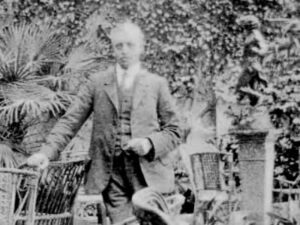 Stoke Park near Slough had been on the market for four years when he purchased it from its previous owner (a coal-mine owner). It was so expensive that few potential buyers existed anywhere. With a landscape by Capability Brown, and neoclassical architecture by James Wyatt, Bryant’s lavish property was unctuously described in the Illustrated London News of 1896 as ‘ “classic”, with Grecian colonnades… It stands out in the bright sun, dazzlingly white – as white as the marble palaces of ancient Athens.’ Its grounds were ‘a great home of “storied urn and animated bust”’ as well as a decorative temple. A previous owner, Lord Taunton, had also built up a large collection of imitations of classical sculptures including the bronze Mercury which can just be made out beside Bryant in this photograph.
Stoke Park near Slough had been on the market for four years when he purchased it from its previous owner (a coal-mine owner). It was so expensive that few potential buyers existed anywhere. With a landscape by Capability Brown, and neoclassical architecture by James Wyatt, Bryant’s lavish property was unctuously described in the Illustrated London News of 1896 as ‘ “classic”, with Grecian colonnades… It stands out in the bright sun, dazzlingly white – as white as the marble palaces of ancient Athens.’ Its grounds were ‘a great home of “storied urn and animated bust”’ as well as a decorative temple. A previous owner, Lord Taunton, had also built up a large collection of imitations of classical sculptures including the bronze Mercury which can just be made out beside Bryant in this photograph.
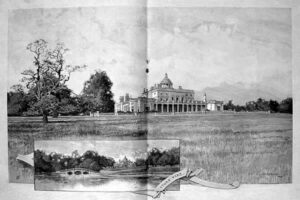
Stoke Park is today an exclusive ‘Luxury Hotel, Spa, Golf and Country Club’, accessible by private membership: http://www.stokepark.com/ The Bryant and May brand name still exists, but is owned by Swedish Match. The Bryant and May factory is today Bow Quarter, a pricey gated community of apartments and penthouses inhabited by celebrities. http://www.thebowquarter.co.uk/.
An event to commemorate the 125th anniversary of the match girls’ strike will be held on July 6th 2013 in the Bishopsgate Institute, London. It is free of charge, but register an interest in attending at matchwomensfestival.com

